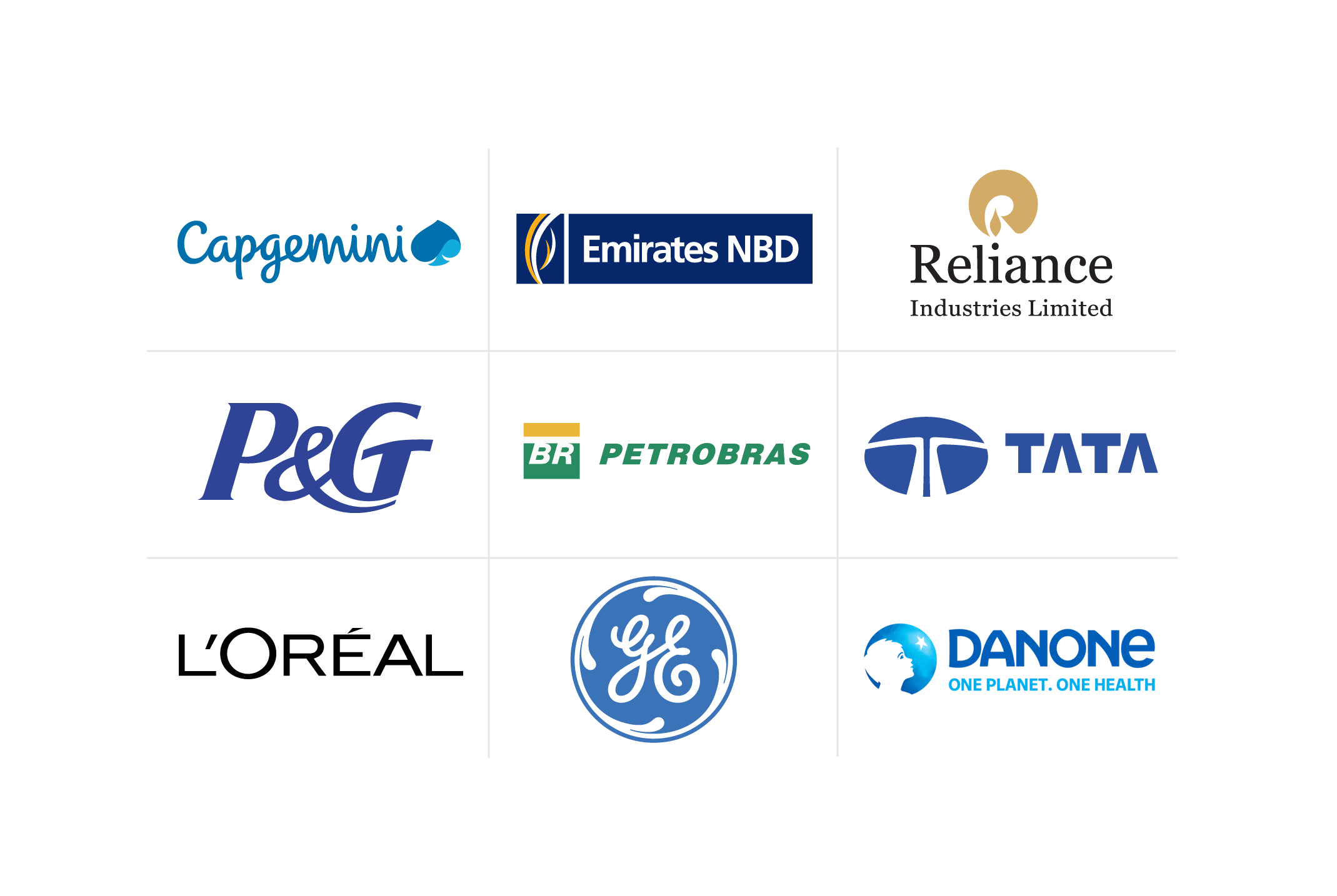Decoding the Job Characteristics Model: Enhancing Workplace Satisfaction and Performance
Employees enjoy a working environment that offers stimulation and satisfaction. Learn how the job characteristics model (JCM) can help you transform your workplace into this type of environment, which can benefit you and your staff.
![[Featured Image] Two business colleagues discuss the job characteristics model and its impact on current work outcomes.](https://d3njjcbhbojbot.cloudfront.net/api/utilities/v1/imageproxy/https://images.ctfassets.net/2pudprfttvy6/wDHqJBjOvRSQz4nHsPt4v/03da3dd2ca3dcb3326fc9c7fb5f22c95/GettyImages-1269374314.jpg?w=1500&h=680&q=60&fit=fill&f=faces&fm=jpg&fl=progressive&auto=format%2Ccompress&dpr=1&w=1000)
No one wants to work somewhere where they’re bored or lack ample challenges. At least, that's what organizational psychologists Richard Hackman and Greg Oldham determined in the 1970s when they set out to determine why employees lost interest in their work. To combat this problem, they developed the job characteristics model, designed to help business leaders create a more engaging and enriching workplace.
Employees who are happy with their jobs experience more favorable outcomes, like a good work-life balance. These positive changes benefit more than just the employee. Happy workers tend to be more productive, which can be excellent for your organization.
Read more: Employee Experience: Understanding and Elevating It
What is the job characteristics model?
The job characteristics model is a framework managers can apply to their employees' jobs to help make them more engaging, motivating, and satisfying. The idea is that meaningful work creates a happier, more productive workforce. The job characteristics model, sometimes called JCM, comprises five unique characteristics that impact an employee's work: skill variety, task identity, task significance, autonomy, and feedback. You can each characteristic as needed to suit the organization’s and your employees' unique needs.
Skill variety
Skill variety refers to the number of activities a job requires an employee to do. If a job is monotonous and offers no variation or chances for workers to use or develop their skill set, it can become dull and meaningless. For example, receptionists may grow bored if they spend their days only answering phones. Still, if you also provide your receptionist with tasks like filing paperwork, creating schedules, and accepting payments, they find the job more engaging. Just be careful not to give a worker so many functions that it becomes overwhelming.
Task identity
Task identity means that the employee who performs a task understands why they're doing it and can see an outcome. It provides a sense of satisfaction compared to performing a task and not understanding the point behind it and can enhance employees’ ability to thrive in the workplace. For example, a person who works on an assembly line for car parts but never sees the finished product — the complete car — or doesn't even know what model of car the part is for would have low task identity. A nurse who takes care of a sick patient in a hospital and eventually sees the patient go home healthy would have a high-task identity.
Task significance
Task significance considers how a task impacts the lives of others, whether it's customers, the community, or the organization itself. For example, scientists who work in a lab to create a cure for a disease like diabetes might have higher task significance because they know their work could improve the lives of millions of people. A cashier in a grocery store may have lower task significance because they view their job as something that contributes minimally to the well-being of others, and it requires minimal specialized skills.
Autonomy
When people have autonomy, they feel in control of what they do. Autonomous workers may work more independently and feel responsible for their successes and failures. Employees who have more freedom are typically happier. Employees who work remotely and make their own decisions about their tasks have more autonomy than those who deal with micromanagement from a supervisor who scrutinizes every move.
Read more: What Is Remote Employee Engagement? Plus 8 Strategies to Enhance It
Feedback
The feedback aspect of the job characteristics model is simply the response a worker gets from their job. It can come in many forms, from direct feedback from a manager or supervisor to a customer filling out a survey about their performance. A teacher might receive input from a learner's parent who tells them at the end of the year how much the learner learned in their classroom. A salesperson might receive a follow-up call from a customer telling them how much they love their new product and appreciate them helping them buy it. When employees receive positive feedback, they might feel satisfied with their job. When they hear negative or corrective feedback, it can help them understand where they might make improvements.
Psychological states and work outcomes
The theory behind the job characteristics model suggests that when each of the five characteristics is high for an employee, they will experience three desired physical states: experienced meaningfulness, experienced responsibility, and knowledge of results.
Experienced meaningfulness is what a worker feels when they've done something valuable, such as help their organization, customer, or community. Experienced responsibility comes from an employee feeling that a successful outcome of their work resulted from their hard work. When an employee can see the impact of the final results of their work, this is knowledge of results.
Read more: What Is Effective Leadership?
Work outcomes
In addition to the three psychological states, implementing the job characteristics model can produce five positive work outcomes. These outcomes include the following:
Performance: Employees put forth an overall positive work performance that includes high-quality work and meeting goals.
Job satisfaction: Employees feel more satisfied and often experience increased motivation and engagement.
Better attendance and less turnover: Employees are less likely to stay home from work or look for another job.
Internal work motivation: Employees who are happy with their jobs naturally work harder.
Work quality and quantity: Employees become more productive with higher-quality work.
Pros and cons of the job characteristics model
The aforementioned work outcomes are some of the advantages of the job characteristics model. Other benefits might include:
Ability to create better job descriptions and strategies
More significant opportunities to encourage collaboration
Employee morale may improve
Employees may gain or perfect skills
Productivity may increase
Turnover may decrease
Employees may create stronger relationships with customers
Jobs typically become more engaging, which often means higher-quality work
You may find it easier to delegate certain tasks to specific employees
Organizational goals may be more transparent and more straightforward to achieve
As with any theory, the job characteristics model may produce better results for some organizations than others. Some potential challenges might include:
It doesn’t factor in job complexity.
Doesn't necessarily consider the unique needs of individual employees
Fails to address technology use
Lacks a human element and doesn't include social support from colleagues
Some say the model is outdated and doesn't take many aspects of the modern workplace into consideration
Tips for putting the job characteristics model into action
You might consider having your managers and HR professionals implement the job characteristics model to boost employee morale and engagement. Before you begin, look at the current roles within your organization and consider how the five characteristics of the model might positively impact them.
Once you have some ideas, consider redefining these roles or creating new ones. You can do this through observation, talking to your employees directly, or asking individual supervisors to list areas where you can improve.
Remember that every employee has unique needs, so some may require more or less certain aspects of the model. Skills, knowledge, inner drive, and leadership styles might also affect your staff's responses.
Read more: Improve Teamwork with These Simple Steps
Some other tips for implementing the model in your workplace include:
Make a habit of regularly sharing feedback from stakeholders, like customers and leadership.
Delegate tasks equally, providing employees with a stronger sense of responsibility. Also, employees should be provided with a variety of tasks to complete.
Consider incorporating job rotation into your organization.
Consider creating new performance standards and assigning a rewards system.
Have more experienced employees take on roles as coaches or mentors.
Getting Started with Coursera
The job characteristics model can help you boost your employees’ overall satisfaction with their work while driving increased workplace productivity. In addition to implementing the model, consider having your managers and supervisors take some online courses to help enhance their skills and knowledge.
Attract frontline talent, support internal mobility, and prepare workers for in-demand, digital jobs with Career Academy from Coursera. Featuring a curated catalog of guided tutorials and projects focused on high-value digital skills and tools, Career Academy offers competitive career development opportunities with training programs from industry leaders like Google, Salesforce, Intuit, Meta, and Ashok Leyland, among many others. Explore Coursera for Business to learn how to provide the technology training your business needs to be competitive.
This content has been made available for informational purposes only. Learners are advised to conduct additional research to ensure that courses and other credentials pursued meet their personal, professional, and financial goals.


